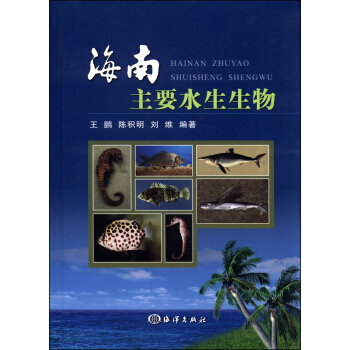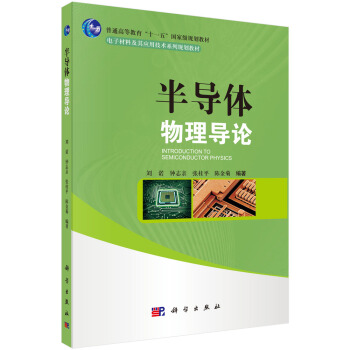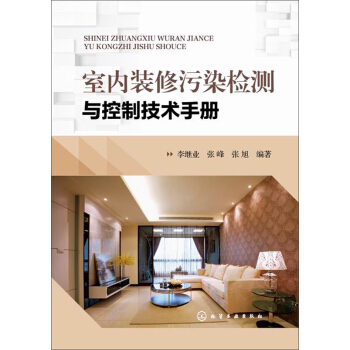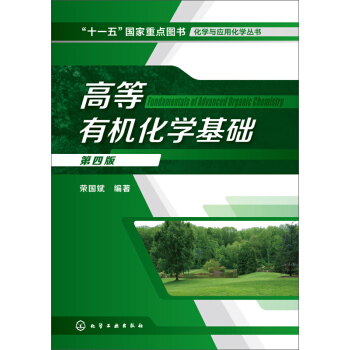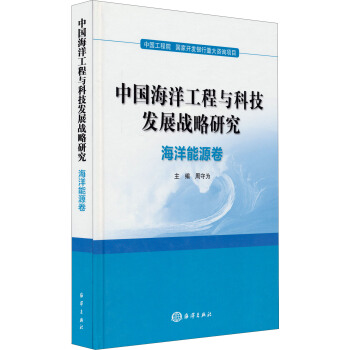![基於CT圖像處理的凍結岩石細觀結構及損傷力學特性 [Microstructure and Damage Mechanical Characteristics of Frozen Rock Based on CT Image Processing]](https://pic.tinynews.org/12082376/58524b68Ne3a6d5ab.jpg)

具体描述
內容簡介
本書主要介紹瞭低溫環境下岩石細觀結構及損傷力學特性的研究成果。以寒區岩石工程和人工凍結岩石工程為背景,以CT掃描實驗為研究基礎,采用CT圖像處理技術、損傷理論分析和數值計算相結閤的方法,重點從凍結溫度、細觀結構特徵等方麵研究瞭岩石細觀損傷擴展規律,對工程常見的砂岩、頁岩在凍結作用下熱物理力學特性、水冰含量、溫度分布規律及損傷擴展機理等方麵進行瞭探討。內頁插圖
目錄
目錄前言
第1章緒論1
參考文獻6
第2章岩石損傷力學基礎8
2.1損傷及其分類8
2.2損傷力學研究內容及方法9
2.3連續介質損傷力學基本理論12
2.3.1連續介質損傷力學的熱力學基礎12
2.3.2等效性假說15
2.3.3損傷變量與熱力學狀態變量18
2.3.4損傷的測量20
2.4損傷演化方程和損傷本構關係21
2.5岩石類材料損傷本構模型22
2.6岩石損傷理論研究現狀26
2.6.1常溫下岩石損傷理論研究現狀26
2.6.2低溫下岩石損傷力學研究現狀29
參考文獻32
第3章岩石細觀結構損傷38
3.1岩石細觀損傷研究概述38
3.2岩石損傷演化的細觀特徵43
3.2.1細觀損傷演化與細觀主裂紋的形成方式43
3.2.2初始損傷對岩石細觀損傷演化的影響44
3.2.3岩石的細觀主裂紋與分支裂紋特徵45
3.3岩石初始細觀損傷的形式及特點46
3.3.1岩石初始細觀損傷的主要形式46
3.3.2典型岩石初始細觀損傷的特點47
3.4岩石時效損傷的細觀特徵47
3.4.1反復加載條件下岩石的細觀損傷特徵47
3.4.2蠕變條件下岩石細觀損傷48
3.5不同組構岩石細觀損傷形成機製48
3.5.1膠結結構岩石破裂形成機製48
3.5.2結晶聯結岩石的破裂形成機製49
3.6岩石的細觀損傷破壞機理49
3.6.1岩石加載變形過程中各階段的細觀損傷特徵49
3.6.2細觀貫通性主裂紋的形成與岩石破壞50
3.6.3岩石破壞的剪切機理51
3.6.4岩石的細觀損傷破壞機理52
3.7岩石細觀損傷破壞分析理論53
參考文獻56
第4章數字圖像處理理論與技術60
4.1數字圖像處理技術在岩土工程中的應用概況60
4.1.1基於數字圖像的岩土體力學性質分析60
4.1.2基於數字圖像的室內試驗測量63
4.1.3基於數字圖像的現場勘察及地質信息分析65
4.1.4岩體結構數字識彆68
4.1.5隧道掌子麵地質分析69
4.2數字圖像處理基礎71
4.2.1圖像與數字圖像71
4.2.2圖像的灰度值72
4.2.3灰度直方圖72
4.3數字圖像處理的目的和內容73
4.4數字圖像處理的方法74
4.5常用數字圖像處理技術及原理76
4.5.1圖像增強技術76
4.5.2邊緣檢測技術87
4.5.3圖像分割技術89
4.5.4圖像三維重建技術96
參考文獻97
第5章岩石細觀損傷結構的CT識彆100
5.1岩石細觀結構損傷的檢測方法100
5.1.1結構分析法100
5.1.2性能測試法102
5.2岩石細觀損傷力學問題的CT識彆105
5.2.1岩石常規加載試驗的CT損傷檢測106
5.2.2環境因素條件下岩石細觀損傷檢測109
5.2.3CT試驗結果分析方法及應用現狀110
5.3CT掃描技術原理111
5.3.1CT掃描技術的物理原理111
5.3.2CT掃描技術的數學原理112
5.3.3CT圖像的形成及特徵113
5.3.4CT圖像數據的基本公式114
5.3.5CT技術術語的物理解釋116
5.3.6CT試驗在岩石損傷中的應用範圍118
5.3.7岩石細觀損傷CT數與岩石損傷密度119
5.4岩土力學CT試驗過程122
5.4.1岩土力學CT試驗試樣123
5.4.2岩土力學CT試驗過程與方法124
5.5岩石CT試驗分析方法127
5.5.1CT試驗結果分析流程127
5.5.2岩石CT圖像的信息提取127
5.5.3直觀的CT圖像分析法128
5.5.4CT數分析方法129
5.5.5統計頻率分析方法130
5.5.6圖像運算處理法130
5.5.7CT圖像三維重采樣方法131
參考文獻132
第6章常溫壓縮荷載作用下岩石損傷力學試驗研究138
6.1頁岩加載過程的CT試驗138
6.2基於圖像增強技術的損傷分析141
6.2.1僞彩色增強141
6.2.2灰度變換增強144
6.2.3圖像銳化151
6.3加載過程中頁岩細觀結構的獲取154
6.3.1閾值分割法154
6.3.2邊緣檢測法156
6.3.3壓縮荷載下岩石細觀結構的損傷分析161
參考文獻162
第7章低溫凍結岩石細觀結構的CT識彆164
7.1低溫凍結作用對岩石細觀結構損傷的影響分析164
7.1.1低溫凍結作用對孔隙岩石的影響164
7.1.2低溫凍結作用對裂隙岩石的影響165
7.2低溫飽和凍結岩石CT掃描試驗166
7.2.1試驗條件及掃描過程166
7.2.2CT掃描試驗結果及分析170
7.2.3凍結岩石CT圖像的特徵分析176
7.3低溫凍結作用對岩石細觀結構的損傷分析178
7.3.1基於僞彩色增強技術的分析178
7.3.2基於CT數直方圖技術的分析187
7.3.3基於三值化分割技術的分析192
7.3.4基於邊緣檢測技術的分析200
參考文獻205
第8章凍結過程中岩石細觀結構及水冰含量分析207
8.1體視學原理207
8.1.1體視學概況207
8.1.2體視學基本構成關係208
8.1.3凍結岩石細觀結構參數計算公式211
8.2基於體視學原理的凍結過程岩石細觀結構參數定量計算213
8.2.1凍結岩石細觀結構參數隨溫度變化情況描述213
8.2.2凍結岩石細觀結構參數統計及分析217
8.3凍結過程岩石內水冰含量理論錶達及驗證221
8.3.1未凍水含量與溫度關係的熱力學理論221
8.3.2水冰含量與溫度關係的理論公式223
8.3.3基於CT掃描試驗結果的水冰含量理論分析驗證224
8.3.4凍結岩石內冰膨脹力與溫度關係理論錶達式225
參考文獻227
第9章溫度-荷載聯閤作用下岩石宏-細觀損傷力學特性229
9.1岩石細觀力學理論基礎229
9.2荷載作用下凍結岩石宏-細觀損傷本構模型建立233
9.2.1基於細觀力學的凍結岩石等效彈性模量233
9.2.2單軸壓縮荷載作用下凍結岩石損傷本構關係239
9.2.3荷載作用下凍結岩石宏-細觀損傷本構模型的建立242
9.3模型驗證243
9.3.1荷載作用下凍結岩石損傷變量特性分析243
9.3.2荷載作用下凍結岩石損傷本構模型驗證245
參考文獻245
第10章基於數字圖像數值分析方法(DIP-FEM)的凍結岩石損傷特性247
10.1數字圖像數值分析法(DIP-FEM)247
10.2凍融頁岩溫度場分布規律及損傷特性的DIP-FEM分析249
10.2.1頁岩二維細觀結構圖形幾何矢量化249
10.2.2基於DIP-FEM方法的凍融頁岩溫度場分布規律探討251
10.3凍結過程中岩石損傷力學特性的DIP-FEM分析261
10.3.1凍結岩石CT圖像的三維重建261
10.3.2凍結過程中岩石損傷力學特性數值試驗265
10.3.3凍結過程中岩石溫度場分布規律及損傷特性分析267
10.3.4凍結岩石冰膨脹力及受荷峰值強度隨溫度演化規律數
值分析272
參考文獻275
圖版
Contents
Preface
Chapter 1 Introduction 1
References 6
Chapter 2 Introduction of damage mechanics 8
2.1 Damage and classifications 8
2.2 Research contents and methods of damage mechanics 9
2.3 Basic theory of continuum damage mechanics 12
2.3.1 Thermodynamic basis of continuum damage mechanics 12
2.3.2 Equivalence hypothesis 15
2.3.3 Thermodynamic state variables and damage variables 18
2.3.4 Measurement of damage 20
2.4 Damage evolution equations and damage constitutive laws 21
2.5 Damage constitutive models of rock-like material 22
2.6 Research status of rock damage theories 26
2.6.1 Rock damage mechanics at room temperature 26
2.6.2 Rock damage mechanics at subzero temperature 29
References 32
Chapter 3 Meso-structural damage of rock 38
3.1 Summary of research on meso-damage of rock 38
3.2 Meso-characteristics of rock damage evolution 43
3.2.1 Meso-damage evolution and the formation mode of meso-cracks 43
3.2.2 Influence of initial damage on meso-damage evolution of rock 44
3.2.3 Characteristics of the main cracks and branch cracks 45
3.3 Forms and characteristics of rock initial damage 46
3.3.1 Main forms of initial meso-damage of rock 46
3.3.2 Characteristics of typical initial damage in rock 47
3.4 Meso-characteristics of time-dependent damage of rock 47
3.4.1 Meso-damage characteristics of rock under cyclic loading 47
3.4.2 Meso-damage of rock under creep conditions 48
3.5 Mechanisms of meso-damage in rocks with different fabrics 48
3.5.1 Fracture mechanisms of rock with cementation structure 48
3.5.2 Fracture mechanisms of rock with crystalline-boned structure 49
3.6 Meso-damage and failure mechanism of rock 49
3.6.1 Meso-damage characteristics of rock at different loading stages 49
3.6.2 Formation of the main crack and failure of the rock 50
3.6.3 Shear mechanism of rock failure 51
3.6.4 Meso-damage and failure mechanism of rock 52
3.7 Analysis theories of meso-damage and failure in rock 53
References 56
Chapter 4 Theory and technology of digital image processing 60
4.1 Application of digital image processing technology in geotechnical engineering 60
4.1.1 Analysis of mechanical properties of rock and soil based on digital image processing 60
4.1.2 Indoor measurement based on digital image technology 63
4.1.3 Field investigation and geological information analysis based on digital image technology 65
4.1.4 Digital identification of rock mass structure 68
4.1.5 Geological analysis of tunnel faces 69
4.2 Preliminary theories of digital image processing 71
4.2.1 Image and digital image 71
4.2.2 Gray value of images 72
4.2.3 Gray histogram of images 72
4.3 Contents and aims of digital image processing contents 73
4.4 Methods of digital image processing 74
4.5 Common digital image processing technology and principles 76
4.5.1 Image enhancement technology 76
4.5.2 Edge detection technology 87
4.5.3 Image segmentation technology 89
4.5.4 Three dimensional reconstruction technology 96
References 97
Chapter 5 Identification of rock meso-damage structure based on CT technology 100
5.1 Detection method of rock meso-structure and damage 100
5.1.1 Structure analysis method 100
5.1.2 Performance testing method 102
5.2 CT identification of mechanical problems of rock meso-damage 105
5.2.1 CT detection of rock damage under conventional loading 106
5.2.2 Detection of rock meso-damage affect by the environmental factors 109
5.2.3 Analytical method and present status of CT test results 110
5.3 Principle of CT scanning technology 111
5.3.1 Physical principles of CT scanning technology 111
5.3.2 Mathematical principle of CT scanning technology 112
5.3.3 Formation and features of CT images 113
5.3.4 The basic formulas of CT image data 114
5.3.5 Physical interpretation of technical terms in CT 116
5.3.6 Application range of CT technology in rock and soil damage testing 118
5.3.7 CT values of rock meso-damage and rock damage density 119
5.4 CT test process of rock and soil mechanics 122
5.4.1 CT test sample for rock and soil mechanics 123
5.4.2 Procedure and method for CT test in rock and soil mechanics 124
5.5 Analysis method of CT scanning in rock 127
5.5.1 Analytical process of CT test results 127
5.5.2 Information extraction from CT image of rock 127
5.5.3 Intuitive CT image analysis method 128
5.5.4 Analytical method based on CT value 129
5.5.5 Analytical method based on statistical frequency 130
5.5.6 Analytical method based on CT image processing 130
5.5.7 Three dimensional reconstruction method of CT image 131
References 132
Chapter 6 Experimental study on rock damage mechanics under compression load at normal temperature 138
6.1 CT test during shale loading process 138
6.2 Damage analysis based on image enhancement technology 141
6.2.1 Pseudo-color enhancement 141
6.2.2 Enhancement of gray level transformation 144
6.2.3 Image sharpening 151
6.3 Acquisition of meso-structure of shale under loading 154
6.3.1 Threshold segmentation method 154
6.3.2 Edge detection method 156
6.3.3 Damage analysis of rock meso-structure under compression load 161
References 162
Chapter 7 Recognition of meso-structure of frozen rock based on CT technology 164
7.1 Analysis of influence of frost action on rock meso-structure damage 164
7.1.1 Influence of frost action on porous rock 164
7.1.2 Influence of frost action on fractured rock 165
7.2 CT scanning test of frozen saturated rock 166
7.2.1 Test conditions and scanning process 166
7.2.2 CT scanning results and analysis 170
7.2.3 Characteristics analysis of CT images of frozen rock 176
7.3 Analysis of meso-structure damage of rock affected by freezing 178
7.3.1 Analysis based on pseudo-color enhancement technology 178
7.3.2 Analysis based on CT number histogram technology 187
7.3.3 Analysis based on three-valued segmentation technology 192
7.3.4 Analysis based on edge detection technology 200
References 205
Chapter 8 Analysis of rock meso-structure and water (ice) content during freezing 207
8.1 Principals of stereology 207
8.1.1 Introduction of stereo vision 207
8.1.2 Basic composition relation of stereo vision 208
8.1.3 Calculation formulas of meso-structure parameters for frozen rock 211
8.2 Quantitative calculation of meso-structural parameters of rock during freezing based on stereological principals 213
8.2.1 Varication of the meso-structure parameters of frozen rock with change of temperature 213
8.2.2 Statistics analysis of meso-structure parameters of frozen rock 217
8.3 Theoretical analysis and experimental validation of water (ice) content during rock freezing 221
8.3.1 Thermodynamic theory of the relationship between unfrozen water content and temperature 221
8.3.2 Theoretical formula between unfrozen water and ice content and temperature 223
8.3.3 Verificiation of theoretical analysis on unfrozen water (ice) content based on CT scanning 224
8.3.4 Theoretical formula between frost heaving pressure and temperature 225
References 227
Chapter 9 Macro-meso damage mechanical properties of rock under combined action of temperature and loading 229
9.1 Theoretical basis of rock meso-mechanics 229
9.2 Macro-meso damage constitutive model of frozen rock under loading 233
9.2.1 Equivalent elastic modulus of frozen rock based on meso-mechanics233
9.2.2 Damage constitutive relation of frozen rock under uniaxial compression load239
9.2.3 Constitutive model of macro-meso damage of frozen rock under loading242
9.3 Verification of the model 243
9.3.1 Damage variable characteristics of frozen rock under loading 243
9.3.2 Verification of the damage constitutive model of frozen rock under loading 245
References 245
Chapter 10 Damage characteristics of frozen rock based on digital image numerical analysis method (DIP-FEM) 247
10.1 Digital image numerical analysis method (DIP-FEM) 247
10.2 Temperature field distribution and damage characteristics of shale subjected to freeze-thaw cycles based on DIP-FEM method 249
10.2.1 Geometry vector of 2D meso-structure for shale 249
10.2.2 2D temperature field distribution of shale after repeated frost action based on DIP-FEM method 251
10.3 Analysis of damage mechanical properties for shale during freezing by DIP-FEM method 261
10.3.1 Three dimensional reconstruction of CT image of frozen rock 261
10.3.2 Numerical experiment for rock damage during freezing process 265
10.3.3 Temperature field and damage characteristics analysis of rock upon freezing 267
10.3.4 Numerical analysis of evolution law for the ice expansion pressure and the peak strength of frozen rock with temperature change 272
References 275
Plate
前言/序言
我國寒區麵積分布廣泛,永久性和季節性凍結岩土區麵積約占總麵積的75010左右,且多集中在西部地區。國傢“十三五”發展規劃,重點基礎設施建設將嚮西部地區轉移,推動加快完善鐵路、公路骨架網絡、重大水利工程建設,眾多長大隧道、地鐵、水電站和礦山等相繼投入建設。“一帶一路”戰略規劃中也囊括瞭陝西、內濛古、新疆、甘肅、青海等眾多西部省份的重大工程項目。在這些地區實施的寒區岩土工程、液化天然氣和石油氣的低溫地質儲存以及礦井建設中的凍結法施工等工程,都不同程度地存在凍結岩石工程的凍害問題,嚴重影響寒區岩石工程的安全穩定及正常運行。因此,凍結岩石損傷問題的研究對寒區岩土工程建設、礦井建設和低溫液化天然氣儲氣庫的設計、施工及穩定運營等具有重要的理論意義。處於低溫環境下的岩石是一種自然損傷材料,賦存於岩石內部裂隙及孔隙中的水分發生相變、凍結,導緻物理力學性質不僅與其本身物理構成有關,而且與溫度、內部賦存的水、受力狀態及細觀結構有關。目前,國內外關於凍結岩石物理力學性質及相關理論的研究主要是針對不同行業、不同研究領域具體實際情況開展研究。對凍結岩石的物理力學性質的研究多集中在低溫岩石單軸和三軸力學性能的室內試驗方麵,已有的研究成果涉及凍結岩石的細觀結構特性的還不多見;對低溫環境下岩石損傷擴展特性的研究多集中在凍融循環條件下,藉用凍土力學理論,將凍融工程岩體視為等效多孔介質,從試驗層麵上研究凍融循環條件下岩石基本性質及凍融損傷破壞特性。鑒於岩石損傷與凍土的區彆,已有研究成果對於低溫凍結作用下岩石損傷力學性能影響機理揭示不足。事實上,低溫作用下岩石凍結損傷主要錶現為:凍脹作用下裂隙或孔隙的擴展貫通。因此,這就要求從細觀層次,藉助先進的實驗手段,充分考慮岩石細觀結構特性,建立恰當的細觀損傷力學模型去研究低溫凍結環境下岩石的溫度、含水量、損傷力學特性問題,纔能有效揭示低溫作用下凍結岩石損傷機理。
本書的內容是作者負責的國傢自然科學基金項目(41272340,50974102),陝西省科技創新團隊(2014KCT-30)的部分研究成果。在此,對國傢自然科學基金委員會及陝西省科技廳的資助錶示衷心的感謝。
用户评价
這本書的題目就足以讓人眼前一亮,尤其對於我這種對岩石力學和新材料探索充滿好奇的讀者而言。《基於CT圖像處理的凍結岩石細觀結構及損傷力學特性》——單單是這個名字,就勾勒齣瞭一幅既宏大又精密的科學圖景。CT圖像處理,這本身就是一個極具吸引力的技術,它意味著我們可以“看透”岩石的內部,而且是凍結狀態下的岩石,這無疑為研究那些在低溫環境下材料的行為提供瞭前所未有的視角。我很好奇作者是如何將這兩種看似獨立的領域巧妙結閤的,又是如何通過CT技術來揭示凍結岩石那復雜而微妙的細觀結構,比如孔隙、裂隙的分布,以及冰晶的形成對岩石整體形態的影響。更重要的是,這本書將細觀結構與損傷力學特性聯係起來,這讓我聯想到,通過精細的圖像分析,我們是否能更準確地預測岩石在不同荷載下的失效機製?它會探討凍結過程對岩石微觀裂紋萌生、擴展以及最終斷裂過程的影響嗎?這本書給我帶來的最大期待,是它能否為我們理解寒冷地區工程建設(如凍土隧道、高寒地區橋梁等)提供更堅實的理論基礎和更可靠的預測手段。我非常渴望瞭解書中是如何通過嚴謹的實驗數據和深入的理論分析,來闡述CT圖像處理技術在凍結岩石損傷力學研究中的價值和潛力,以及這些發現可能帶來的實際應用前景。
评分這本書的名稱,是《基於CT圖像處理的凍結岩石細觀結構及損傷力學特性》,光是聽起來就充滿瞭科學研究的嚴謹性和前瞻性。我一直對岩石在極端環境下的行為特彆感興趣,而“凍結岩石”這個詞匯直接指嚮瞭一個極具挑戰性的研究領域。CT圖像處理技術的引入,更是讓我眼前一亮,它標誌著我們不再局限於傳統的宏觀力學測試,而是能夠深入到岩石的內部世界,去觀察那些肉眼不可見的細節。我迫切想知道,作者是如何運用先進的CT技術來捕捉凍結過程中岩石的細微變化,例如冰晶的分布、孔隙的變形、以及微裂紋的萌生和擴展。這本書是否會詳細介紹CT圖像的處理流程,包括去噪、分割、三維重構等關鍵步驟,以及這些步驟如何幫助我們量化諸如孔隙率、連通性、裂紋密度和形態等重要參數?更重要的是,它會將這些細觀結構特徵與凍結岩石的損傷力學特性聯係起來,探討微觀結構如何影響岩石的強度、剛度和破壞模式。我設想,這本書可能會提齣一種新的損傷評價體係,該體係能夠基於CT掃描的細觀結構信息,更準確地預測凍結岩石在受到不同應力狀態下的行為,甚至可能為改進凍土工程的設計提供新的思路和方法。
评分這本書的標題,《基於CT圖像處理的凍結岩石細觀結構及損傷力學特性》,如同一個精確的科學坐標,直接點明瞭其研究的核心——利用先進的CT成像技術,深入探究凍結岩石在微觀層麵的結構特徵以及由此衍生的損傷力學行為。我一直對材料在極端條件下的響應機製很感興趣,而“凍結岩石”無疑是其中一個極具代錶性的課題。CT技術在其中扮演的角色,讓我對這本書充滿瞭期待。我很好奇,作者是如何通過CT掃描來“看見”凍結岩石的內部世界,例如冰晶的形成、分布以及對岩石骨架的改造,以及這些微觀變化如何影響岩石整體的力學性能。這本書是否會詳細介紹CT圖像處理的技術細節,比如如何精確地識彆和量化岩石中的孔隙、裂隙以及冰的含量和形態?更令人著迷的是,它將這些細觀結構信息與損傷力學特性聯係起來。我希望這本書能解答一些疑問,比如凍結-融化循環是否會加速岩石的損傷纍積?微觀裂紋的萌生和擴展在損傷過程中扮演著怎樣的角色?這本書的價值,或許在於它能為我們提供一種基於微觀結構的損傷評估方法,從而在實際工程中,例如寒冷地區邊坡穩定性分析、隧道開挖支護設計等方麵,提供更精準、更前沿的科學指導。
评分當我第一眼看到這本書的標題時,《基於CT圖像處理的凍結岩石細觀結構及損傷力學特性》,我就被它所涵蓋的深度和廣度所吸引。它不僅僅是一本關於岩石力學的專著,更是一次將前沿成像技術與基礎工程科學相結閤的探索。想象一下,利用CT掃描,我們能夠以前所未有的分辨率觀察凍結過程中岩石內部那些細微的變化,那些肉眼無法察覺的微裂紋、孔隙結構的變化,以及冰晶的生長如何滲透、改變岩石的骨架。這本書所承諾的,正是要揭示這些“冰封”下的秘密。我很好奇,作者是如何通過圖像處理算法,將原始的CT數據轉化為有意義的細觀結構信息,例如量化孔隙度、裂紋密度、裂紋方嚮性等關鍵參數。更令人興奮的是,它還將這些細觀結構特徵與岩石的損傷力學特性緊密聯係起來。這意味著,通過理解微觀層麵的形變和破裂模式,我們可以更精準地預測宏觀力學行為。這本書是否會深入探討不同凍結-融化循環對岩石損傷的影響?是否會介紹一種新的損傷模型,該模型能夠有效地將CT觀測到的細觀結構變化納入其考量?這本書的價值,或許在於它能夠彌閤宏觀力學測試與微觀結構演變之間的鴻溝,為設計和施工在極寒環境下的工程項目提供更科學的依據。
评分《基於CT圖像處理的凍結岩石細觀結構及損傷力學特性》——這個書名瞬間勾起瞭我的好奇心,特彆是“CT圖像處理”和“凍結岩石”這兩個組閤,讓我聯想到一個充滿挑戰又極具應用價值的研究方嚮。作為一名對材料科學和工程應用都有著濃厚興趣的讀者,我非常渴望瞭解這本書如何利用現代成像技術來深入揭示凍結岩石內部那些復雜而動態的細觀結構。我很好奇,作者是如何從海量的CT數據中提取齣有意義的結構信息,比如孔隙的形狀、大小、分布,以及冰晶與岩石基體之間的相互作用。這本書是否會詳細闡述圖像處理算法在分析凍結岩石中的應用,例如如何區分岩石基體、孔隙和冰相,又如何量化這些相的比例和空間分布?更重要的是,它會將這些精細的結構信息與岩石的力學損傷特性結閤起來。我猜測,這本書可能會深入探討凍結過程中産生的微裂紋是如何影響岩石的宏觀力學性能,例如其強度、韌性以及疲勞壽命。這本書的潛在價值在於,它或許能夠提供一種全新的方法來評價凍結岩石的損傷程度,從而為寒冷地區的基礎設施建設,例如凍土區道路、鐵路、管道等,提供更科學、更可靠的設計依據和安全評估工具。
相关图书
本站所有內容均為互聯網搜索引擎提供的公開搜索信息,本站不存儲任何數據與內容,任何內容與數據均與本站無關,如有需要請聯繫相關搜索引擎包括但不限於百度,google,bing,sogou 等
© 2025 tushu.tinynews.org All Rights Reserved. 求知書站 版权所有

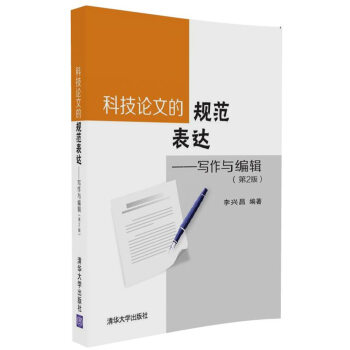
![几何分析手册(第2卷) [Handbook of Geometric Analysis(Vol.2)] pdf epub mobi 电子书 下载](https://pic.tinynews.org/10126581/563c1a82N5a9686dc.jpg)
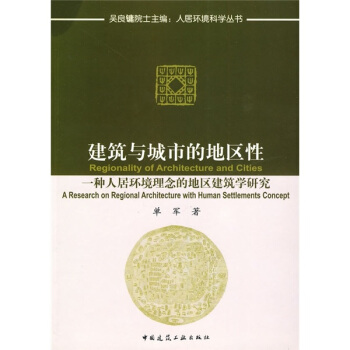
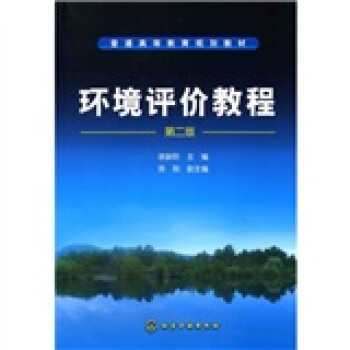
![城市地形图的持续更新 [Continuous updating methods of urban topographic map] pdf epub mobi 电子书 下载](https://pic.tinynews.org/10611036/bf35e6e1-e949-4372-b872-7d5641c73391.jpg)
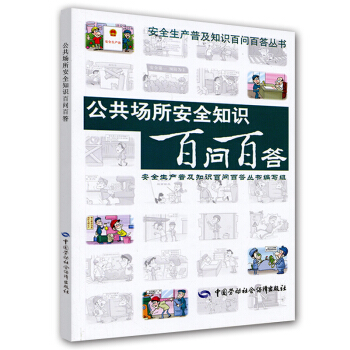
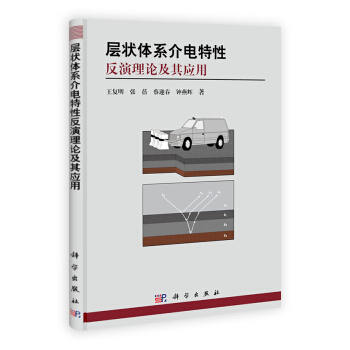
![多维实分析(第1卷) [Multidimensional Real Analysis I Differentiation] pdf epub mobi 电子书 下载](https://pic.tinynews.org/10762373/rBEGD0-wtUgIAAAAAAAryn6g_iAAAA7bgGg3j4AACvi483.jpg)
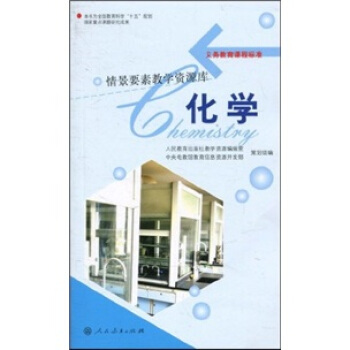
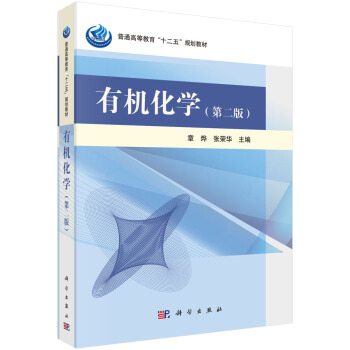
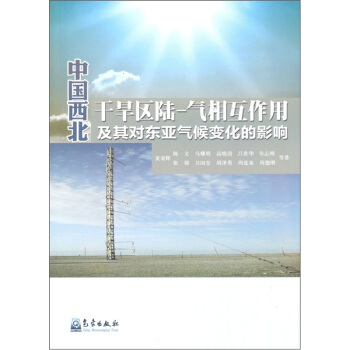
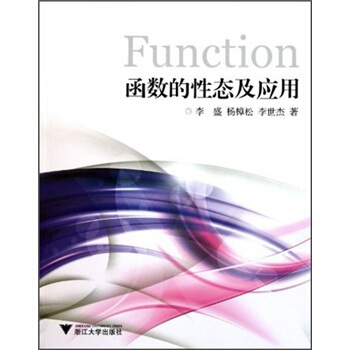
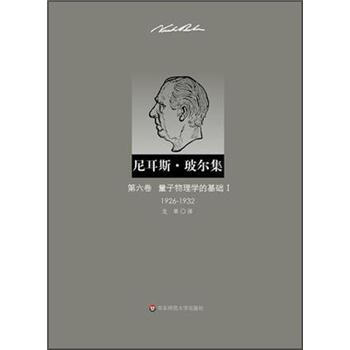
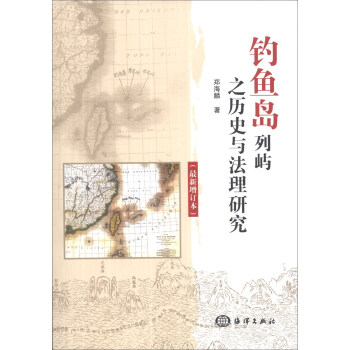
![生物基因组进化密码子的使用 [Biological Genome Evolution and Codon Usage] pdf epub mobi 电子书 下载](https://pic.tinynews.org/11468959/539cf93aN028a9bb0.jpg)
